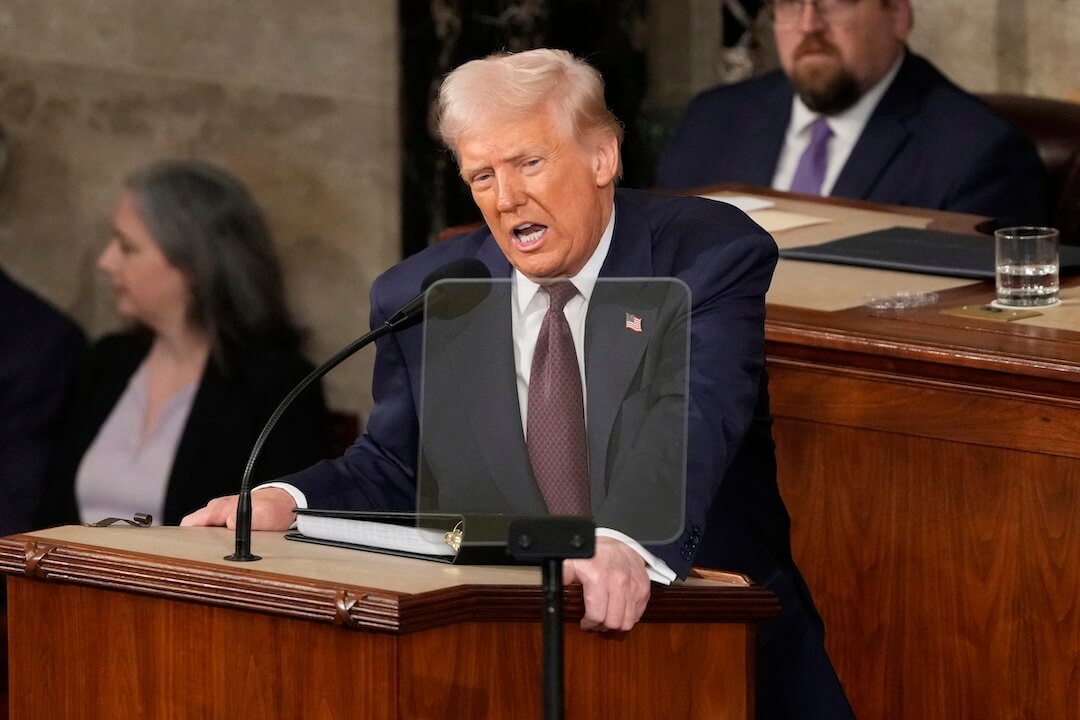Ask Americans why Central American immigrants are arriving at the southern U.S. border in ever-larger numbers, and some will say it’s lax border enforcement, disregard for the law and the temptations of U.S. jobs and generous welfare benefits.
Others, including the Biden administration and experts in the region, will point to what they call “root causes” of migration: entrenched corruption, grinding poverty, economic stagnation and fear of violence in the home countries that all but compel people to seek relief in the U.S.
It’s these conditions, they say, that explain why moms, dads, teens and kids would take the risks they do, leaving behind their families and traditions, embarking on a journey that typically requires walking nights and days through the desert without water, swimming against strong river currents without a life vest, or hiding in the back of a tightly packed tractor-trailer for hours without enough air to breathe.
The root causes get little attention in the swirl of misinformation that accompanies each new cycle of immigration. But they are real and pervasive, these experts say. And for more and more people, there’s no hope left that the conditions will ever change.
Extreme poverty and hunger intensify their despair.
“In El Salvador, in general, people live day-to-day in survival mode, hoping you don’t get killed, hoping you at least have some beans to feed your family,” Eduardo Escobar, the executive director of Acción Ciudadana in El Salvador, an anti-corruption group, told PolitiFact.
“People feel stuck,” Escobar said. “Historically, they haven’t felt heard or attended to by the government.”
President Joe Biden has set a goal to invest $4 billion over four years in Central America to address the reasons why people feel a need to come to the United States in the first place. The effort would focus on Honduras, Guatemala and El Salvador, the so-called Northern Triangle countries, which have experienced significant emigration in recent years.
Biden’s funding proposals face an uncertain fate in Congress, but in the meantime, he has tapped Vice President Kamala Harris to lead U.S. efforts to help improve conditions in the Northern Triangle, a task Biden himself had taken on when he was vice president.
Harris makes her first international trip as vice president this week, to Mexico and Guatemala.
Given the administration’s attention to addressing the root causes of emigration from Central America, and the prospect of new funding, PolitiFact took a look at what the prevailing conditions are in the region and how they end up driving people out.
Central Americans seeking new lives in the United States are reluctant to tell their stories. But people in Central America who lead anti-corruption efforts and U.S.-based experts who study migration and Central America describe countries where crisis conditions caused by wars, displacement, scarcity, a legacy of corporate colonialism and other social ills have hampered daily life to the point of desperation.
[the_ad id=”667826″]
Who is leaving?
The poorest of the poor in all three countries don’t always get a chance to get out. The people who are able to leave typically are those who have gathered enough money to pay a smuggler to get them to U.S. soil, or as close as possible. Commonly, it’s people who have been able to sell any land or other property they own, who have managed to save money sent over the years by relatives in the U.S., or who have borrowed enough money from family and friends, with a pledge to start repayment as soon as they land a job in the U.S.
The smuggling fee can vary based on several factors, including the starting point and the smugglers’ routes and tactics. Some people are charged as much as $15,000. Some smugglers allow a “pay as you go” plan, collecting installments as they get people to certain points in their journey. About half of Guatemala’s population are Indigenous people, historically marginalized and discriminated against by their own government. Seeing no chance of betterment, they are among the most likely to risk leaving.
People who leave their countries are under no illusion that they will live in luxury in the United States, said Manfredo Marroquín, executive director of Acción Ciudadana in Guatemala, a civil society organization working to strengthen democracy in Guatemala. Marroquín, who was scheduled to meet Harris on her trip, said Guatemalans know they will be in a country where people speak a different language and where they will likely need to work long hours of manual labor for little pay. But they hope they will earn enough to at least get some things they may never have in their own country: a TV, a stove, a Sunday off.
“What every normal family wishes for,” Marroquín said.
Another set of people leaving Guatemala, Marroquín said, are families who are somewhat well-off and can travel by plane to the United States. A direct flight from Guatemala City to Miami is just over two hours. Those families aren’t necessarily destitute, but they don’t want their children growing up surrounded by violence or without a well-paying job after getting a college degree. “They leave with visas,” Marroquín said. “But they also don’t come back.”
From the 1980s to the 2000s, when annual southern border apprehensions often exceeded 1 million a year, Border Patrol agents mostly encountered men from Mexico who were coming looking for jobs and trying to avoid detection from border authorities. That changed in the early and mid-2010s, when the U.S. started seeing a historic increase in the numbers of Central American families and unaccompanied children arriving, looking for refuge from the threats of criminal gangs. These children and families sought out Border Patrol agents, so they could ask for asylum protection.
From fiscal years 2005 through 2015, Customs and Border Protection more than tripled the total miles of primary border fencing to stop people from entering the U.S. on foot and in vehicles between official ports of entry. The Trump administration added about 50 miles of that primary fencing.
In the 1990s, people used to cross the Mexico-U.S. border relatively freely and easily, experts said. So a Central American or Mexican parent who went to the U.S. to work might have been able to return to their country of origin more often to visit their children. Once more barriers went up, that back-and-forth happened less frequently. Parents stayed in the U.S., and children were left behind with a relative in their home country.
These days, many of the teens arriving alone at the border are coming to reunite with their parents, whom they haven’t seen in years. The increased barriers aren’t deterring migration attempts.
Marroquín said that when former President Donald Trump was in office promoting a border wall, smugglers would urge people to cross, before the wall went up and enforcement stiffened.
“Trump made smuggling fees go up,” Marroquín said. “But he didn’t stop people from going.”
Now that Biden is in office, smugglers have a different sales pitch. They tell people that now laws are more relaxed.
Smugglers “will always find arguments to give people hope,” Marroquín said.
Poverty and inequality, U.S. involvement
Central America is an isthmus between the Pacific Ocean and the Caribbean Sea. Its location leaves its people vulnerable to destruction and displacement from powerful hurricanes and earthquakes, compounding problems in already impoverished nations.
Farmers are also at the mercy of extended droughts; when they lose their crops they also lose their ability to feed their families and make a living.
Guatemala, Honduras and El Salvador are relatively small and poor countries that have a hard time competing individually in the world economy. Economic development policies instituted throughout the years have pushed the countries to rely heavily on one or two agricultural products, such as coffee and bananas.
That has had “serious consequences” for the kinds of jobs available, said Cecilia Menjívar, a professor and Dorothy L. Meier Social Equities Chair at University of California, Los Angeles.
Experts also say that at the heart of Central America’s poverty are vast inequality, deeply rooted injustices and the legacy of U.S. intervention. The U.S. has long thought of Central America as its backyard, said Leisy Abrego, a professor in Chicana/o and Central American studies at UCLA.
“There’s a long history of the United States and other foreign powers having a say in how things are done in the economies there that guarantee that level of inequality,” Abrego said.
U.S. businesses with connections in Congress have set up shop in Central America, displacing farmers from their land and exploiting them for labor, Abrego said. At times when leaders in Central American countries have wanted agrarian reforms, U.S. businesses enlisted Washington to help trample those efforts, sometimes with the U.S. supporting regime changes, she said.
Most of the jobs that have become available to people are unstable, low-paying field jobs without benefits or workers’ rights protections, Menjívar said.
It’s “just pure, raw, human labor devoid of any rights, and that is not a good way to develop a good economic infrastructure,” Menjívar said. “You can see how the roots of the current poverty, how these extreme conditions did not come out of the blue.”
The “elite” in the region know they are protected as long as they align with U.S. and other foreign interests, Abrego said, so they’ve allowed foreign businesses to operate with few or no taxes and without fair labor laws.
“They have no interest in changing that,” she said.
[the_ad id=”667872″]
Persistent extortion and violence
People who have some modicum of economic opportunity aren’t safe from trouble.
Criminal gangs are prevalent throughout poor neighborhoods in Guatemala, Honduras and El Salvador. But they also extort and victimize anyone who appears to be slightly better off than others around them.
Nurses, teachers, bus and taxi drivers, people with a corner food stand or a small neighborhood produce store are sure targets. People who can’t afford to pay for private security risk their lives just to get to and from work, experts said.
Also in danger are people who have relatives in the United States and who occasionally receive money to pay for schooling, food and other necessities. If a house in a neighborhood gets a fresh coat of paint or any other sign of improvement, gang members see that as an opportunity.
“They are heavy into extortion. If you challenge them, they get really vicious real fast,” said Harry E. Vanden, a professor emeritus at the University of South Florida, whose expertise includes Latin American studies.
Some people are forced to pay gangs a fee just to avoid being attacked, leaving them with less money to feed their families. Those who fail to pay may end up raped, kidnapped, recruited or killed.
In response to an increase of Central Americans arriving at the southern border during the Obama administration, the U.S. tried to discourage Central Americans from migrating illegally to the United States, with local billboards and radio ads warning about the dangers they may face in their journey, like getting kidnapped, sexually assaulted or killed.
“People don’t pay attention to those warnings,” Marroquín said, “because they already live under that threat here daily.”
Police have been mostly powerless against the gang threat. Generally, the officers are poorly trained, low-paid, and susceptible to corruption, experts said.
“If they get into it with the gangs, then gangs go after them,” Vanden said.
The number of gang members in each country is difficult to pin down. Estimates vary widely. In Honduras alone, some estimates for 2016 ranged from about 6,000 to 25,000.
The major gangs threatening Central Americans — the 18th Street gang, or M-18, and its rival Mara Salvatrucha, or MS-13 — started in the United States. They expanded to Central America after the U.S. in the 1990s imprisoned members and deported many who were in the country illegally.
The fact that all three countries were ravaged by civil conflicts in the 1980s should not be forgotten either, Menjívar said, “because that’s the root of so much of the violence that we see there today.”
“It’s the same violence, just transformed into common crime, gang violence,” she said.
In Honduras, Guatemala and El Salvador, domestic and other forms of violence, particularly against women and LGBTQ people, are also a serious problem.
“In theory, the laws to protect women from violence are there,” Menjívar said. “In practice, they are completely empty of any teeth.”
So many women see no other option than to leave their country.
“They have heard that things are better” in the U.S., Menjívar said. “That here at least you can call the police and the police will respond.”
Long trail of corruption
Corruption is a factor in people’s decision to emigrate, Escobar said, “but you won’t hear people here say, ‘I’m leaving because of the corruption.’ People will say, ‘I’m leaving because there are no opportunities here. I’m leaving because they’re going to kill me. I’m leaving because I have no job.’”
Nonetheless, systemic corruption lies at the root of those ills, strangling the economy and widening inequality.
Earlier this year, the U.S. Justice Department said that Tony Hernández, a former Honduran congressman and brother of the current president of Honduras, was sentenced to life in prison for cocaine importation, weapons violations, and making false statements. The U.S. has also linked the Honduran president, Juan Orlando Hernández, to drug trafficking. He has not been charged.
In El Salvador, former presidents have also faced corruption charges; one of them died in 2016 while awaiting trial for allegedly embezzling donations from Taiwan destined for earthquake relief. In 2018, another former president pleaded guilty to money laundering and embezzlement of some $300 million.
In Guatemala, at least four former presidents have faced corruption charges as a result of investigations led by a United Nations-backed commission created in the late 2000s, the New York Times reported in 2018.
As an example of how broken things are in Guatemala, Marroquín cited legislators and mayors who win elections thanks to their reputation as effective smugglers.
“Everything is backward,” Marroquín said. “They win because people see them as leaders, as people who get things done. They see them as good people who were able to get their aunt or uncle across the border, as people who saved them.”
Escobar, who leads the anticorruption group in El Salvador, said that society has developed so heavily under corrupt practices that some types of “micro” corruption — paying off a police officer at a traffic stop, say, or bribing a principal to get a child into school — have become normalized, accepted as just the way things are in the country.
“The problem here is that the institutions don’t work,” Escobar said.
[the_ad id=”667878″]
What will keep people home?
To effectively slow emigration, Biden’s plan would first have to work its way through Congress, and then through the thicket of challenges in Central America.
People need stability, experts said. They need jobs, better salaries, better working conditions. More opportunities to start and grow businesses and to create wealth.
The Biden-backed Democratic immigration bill, the U.S. Citizenship Act, outlines a four-year initiative — the U.S. Strategy for Engagement in Central America — and calls for the collaboration of U.S. agencies, foreign governments and civil organizations that promote freedom of the press, human and labor rights.
Up to 50% of the money appropriated in each fiscal year could be used on Day 1 toward the initiative’s goals. But the remaining 50% would be available only after the U.S. determines that the respective foreign governments have taken steps to address corruption, implemented policies and programs to reduce poverty and counter violence, among other measures.
The bill also directs the State and Treasury departments to secure financial and technical assistance from international donors to support the U.S. strategy. The proposal orders administration officials to create and push public information campaigns in Central America to discourage unauthorized migration and to provide accurate information about U.S. immigration laws and policies.
Rep. Norma Torres, D-Calif., co-chair of the Central America Caucus in the House of Representatives, told PolitiFact that fighting corruption and impunity in Central America is key in addressing the factors that push people to migrate. She said it’s also important that any U.S. investment includes mechanisms for transparency and accountability, to ensure that funds go directly to the people who need it most, including people in isolated areas of the region.
“We will only reduce migration by creating opportunities for the people there,” said Torres, who was born in Guatemala. “If they can see a future for themselves, if they can see improvements in their safety, curtailing of the drug cartels and the gangs, I think that migration will be a secondary issue.”
Experts emphasized that the U.S. government needs to be wary of partnering with government offices and leaders who have a history of corruption. They suggest more involvement from local civil society organizations to empower and train people so they have better alternatives.
Escobar said it’s also important to better educate societies in Central America about corruption and what they lose as a result of it.
At the top of that list? People.
This article was originally published by PolitiFact, which is part of the Poynter Institute. It is republished here with permission. See the sources for these fact checks here and more of their fact checks here.






